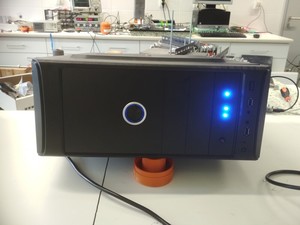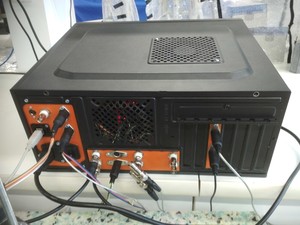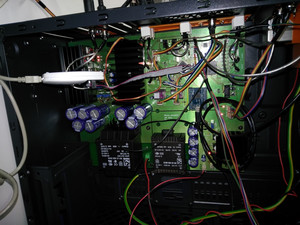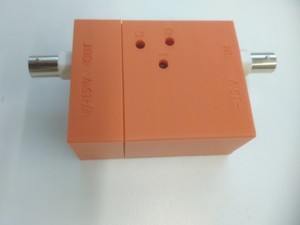Control Unit
Transducer/velocity modulation is based on the self-tuning MPC (model predictive control) procedure, thus no PID regulation is nedeed. Control unit is capable to drive two transducers independently. Concurrently control unit carries out signal shape discrimination on two independent signals from detectors. Signal lines from detectors are terminated by 50 Ω. PMT high voltage is controlled digitally from control unit and can be set independently on both PMTs. Control unit acquires two Mössbauer spectra each recorded in max. 2048 channels.
| Velocity modulation working frequency | 3–80 Hz |
| Excitation current waveform resolution | 12 bit |
| Pick up coil voltage measurement resolution | 12 bit |
| Max excitation current | from ±13 mA up to ±910 mA (keeping 12 bit resolution) |
| Pick up coil voltage limit | from −5 V to +5 V |
| Adjustable pick up coil voltage gain | 11 levels (from 0.125 to 128 by power of two) independently on each channel |
| Max. output voltage for external transducer current driver | ±2.5 V |
| Signal max. input voltage limit | from −0.5 V to +5 V |
| Signal max. voltage for MCA | from 0 V up to +2.5 V |
| MCA levels resolution | 12 bit |
| PMT high voltage settings | from 0 to +1250 V with 12 bit resolution |
Amplifier
Our amplifier consist of two stages: transimpedance amplifier (I to V converter) and noninverting amplifier. Output voltage is series terminated by 50 Ω. Signal is shaped by adjustable RC integrator.
| Transimpedance gain | 3.3 kΩ |
| Noninverting amplifier gain | 3 – 47 (manualy adjustable) |
| Shaping integration constant | from 10 ns to 1010 ns (manualy adjustable) |



